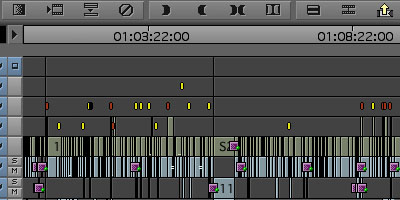This happens no matter what codec you are encoding to. If your source is DNxHD and you apply a TC Generator or Text Overlay you will see this bug.
Fortunately I've discovered a simple trick to get this working. For whatever reason, if your DNxHD QuickTime movie has an embedded text track it will successfully compress the movie, even with the Timecode or Text filters enabled. You don't need to have any text in the text track, it can be blank, as long as it's embedded in your DNxHD movie file before you bring it in to Compressor it will work.
So, I've created a Automator droplet that automatically adds an empty text track to any QuickTime movie file that is dropped on to it. All that's required is to have QuickTime Pro player. (Be sure it's Pro because the Automator uses the copy and paste functions of the Pro player to add the empty text track.)
Thanks to Avid forum user slebog for the Apple script this droplet is based on. More info here: http://community.avid.com/forums/p/94827/596090.aspx#596090
Download the Automator droplet HERE
- Export a Same as Source or Reference Quicktime out of Avid
- In the Finder, drag that .mov file on to the "dnxhd text track" droplet.
- It will open your movie in QuickTime Player 7 and copy and paste an empty Text Track in to the movie. This will happen pretty quickly but be sure not to click the screen or press any keys because it will disrupt the process. It will close the QuickTime movie with the process if complete.
- Then just drag your same .mov into Compress, apply the filters, and submit as usual.
Let me know in the comments if this is helpful or if there are any issues with the process. It has been working great for me and saves a ton of time!




